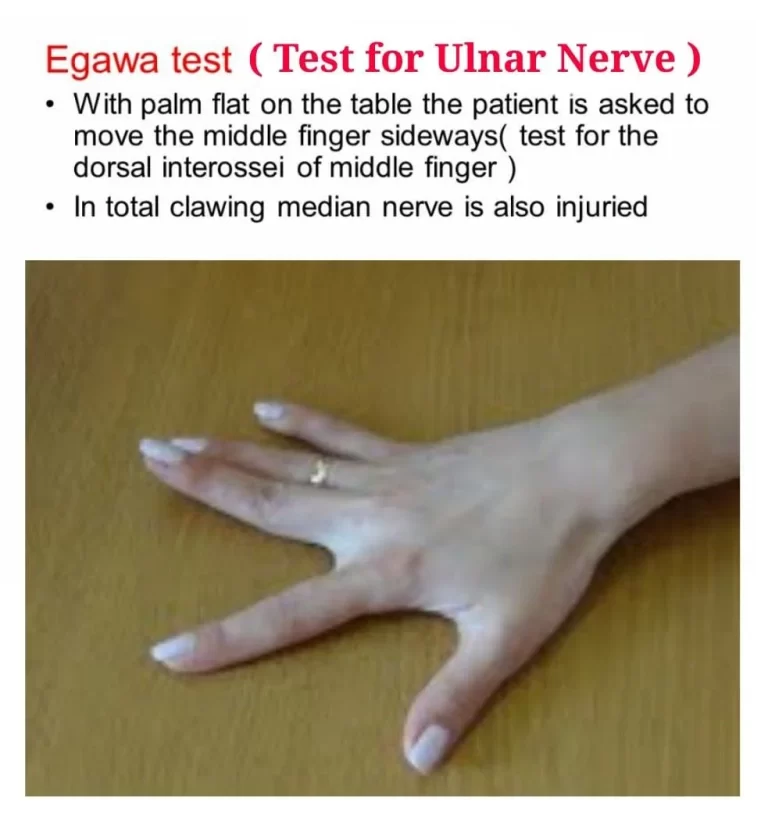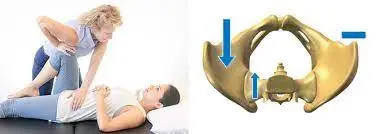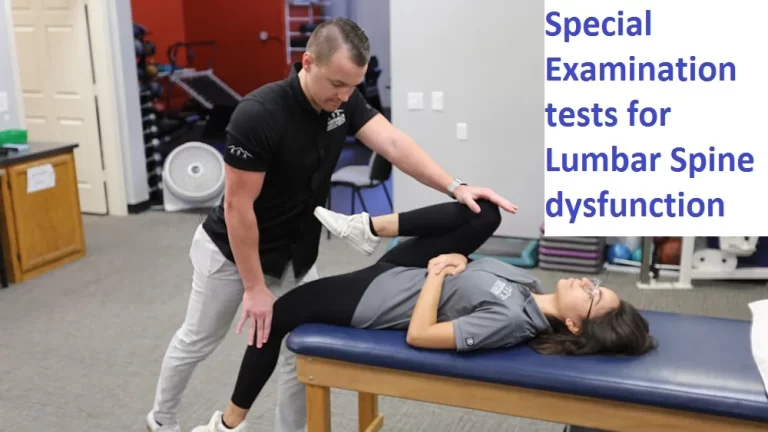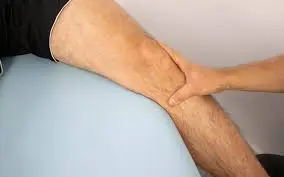Noble’s test
Table of Contents
Introduction
The Noble’s test (Noble’s Compression test) is a provocative iliotibial band test created by Clive Noble. It is often used as an indicator of iliotibial band syndrome; however, no evidence-based study has been conducted to control the validity of this test. Other tests that might be utilized are the modified Ober’s test and the Renne Creak test.
The iliotibial band (IT) is a tough band of fibers that runs around the outside of the thigh. The glutes and tensor fascia lata muscle attach to the upper part and the lower part attaches to the tibia just below the knee. It mainly acts as a stabilizer when running and can be irritating if overused. In ITB friction syndrome, the pain is usually described on the outside of the knee or thigh and is often worse when going up or down stairs or getting out of a car.
Predisposing factors to IT band inflammation are training errors and abnormal biomechanics. Some runners make the mistake of running only on one side of the road. Most roads are higher in the middle and slope on both sides. The leg away from the road is therefore lower than the other. This causes the pelvis to tilt to the side and stretches the IT band. Biomechanical abnormalities that can cause IT band problems include excessive pronation of the foot, leg length discrepancies, lateral pelvic tilt, and “bowed” feet. Tight gluteal muscles or quadriceps muscles can also be affected.
Other names
- Noble compression test
- Compression test
- Noble’s Test
Clinically relevant anatomy
An importance of anatomy related to the test is knowing the iliotibial band. It starts from the fascia lata originating from the iliac crest. The iliotibial region continues down, on the side of the femur. In the greater trochanter, the fibers of the tensor fascia lata and gluteus maximus muscle of the iliac muscle pass into the iliotibial canal. Approaching the knee joint, the iliotibial tract passes through the lateral epicondyle of the femur and divides into two structures: the iliopatellar group and the distal extension, which goes into Gerdy’s tubercle.
During walking and running, frictional and compressive forces are applied to the iliotibial band over the lateral epicondyle. Repetitive strain, improper footwear, lower limb imbalances, and muscle imbalances increase friction. Iliotibial band (ITB) tear syndrome is an overuse injury common to runners, cyclists, weightlifters, skiers, and soccer players. It is identified by pain on the lateral femoral epicondyle.
Purpose
The purpose of this test is to detect pain, abnormalities, and tension in the iliac canal, which may indicate iliac band syndrome. This helps differentiate iliotibial band syndrome from other common causes of knee pain.
Technique
Procedure
The patient lies on the back or side, with the injured side up. Grasp above the ankle and slowly bend the knee back and forth from 0 to 90° several times while palpating and pressing firmly on the lateral epicondyle of the femur with the thumb of the other hand.
Interpretation
An identifiable clicking, rubbing, or “tremor-like” crepitus or localized pain that increases with pressure at or above the epicondyle (often at 30 degrees of flexion) suggests ITB syndrome.
Evidence
Reliability and validity: unknown
Significance of the test
In a patient with IT band knee pain, pain may be repeated (and exaggerated) in this test as the examiner reinforces compression of the distal IT band with the thumb. With this enhanced pressure, the patient’s active stretch can simulate pain-causing activity and determine the effect of the IT group on the patient’s symptoms.
Clinical background
This test shows iliotibial band syndrome, but again, no studies have been done to show the validity of this test.
FAQ
Definition/Description
Noble’s Compression test is a provocative iliotibial band test created by Clive Noble. It is often used as an indication of iliotibial band syndrome; However, no evidence-based studies have yet been conducted to verify the validity of this test.
Scoring the Noble Squeeze Test is easy. Noticeable crepitus or pain at or above the lateral femoral epicondyle, usually at about 30 degrees of flexion, indicates a positive test result. This indicates the presence of iliotibial band syndrome.
Reference
- Test of noble. (n.d.). Physiotherapy. https://www.physio-pedia.com/Noble’s_test
- Noble compression test. (n.d.). A student? Physiotherapist. https://www.thestudentphysicaltherapist.com/noble-compression-test.html
- Rosenthal, M.D. (2008). A clinical trial of extra-articular lateral knee pain. Modifying and combining traditional tests. North American Journal of Sports Physical Therapy: NAJSPT, 3(2), 107-109. https://www.ncbi.nlm.nih.gov/pmc/articles/PMC2953323/
- Orthopedic test of the knee: Test of Noble. (n.d.). https://www.mataassessment.com/blog/noble’s-test
- Knee exam. (n.d.). Stanford Medicine 25. https://stanfordmedicine25.stanford.edu/the25/knee.html
- V. Akuthota, S.K. Stilp, P. Lento, P. Gonzalez, and A.R. Putnam (2020, January 1). Syndrome of the iliotibial band. eBooks from Elsevier. https://doi.org/10.1016/b978-0-323-54947-9.00069-9
- Hutchinson, L., Lichtwark, G.A., Willy, R.W. . and Kelly, L. (1999). A. (2022, January 24). The iliotibial band: a complex structure with multiple functions. Sports medicine; Springer Science Business Media. https://doi.org/10.1007/s40279-021-01634-3
- Noble pressure test and example | Free PDF Download. (n.d.). https://www.carepatron.com/templates/noble-compression-test







